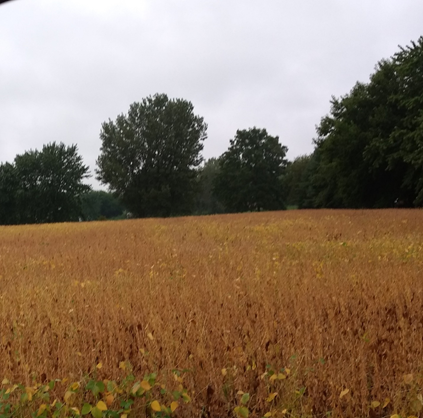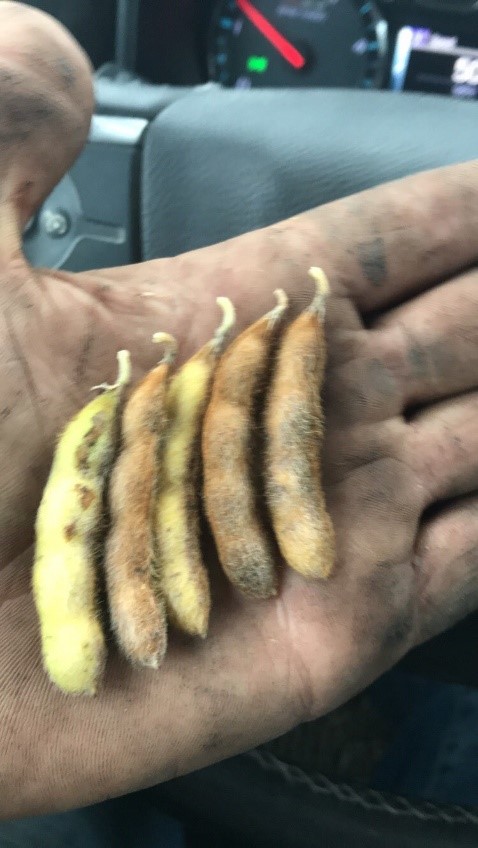 |
 |
| Green stems in soybeans can impact when you harvest, as well as ease of harvest. | Photo by Tim Kilmer. In addition to green stems, sometimes pods are at different stages at harvest, affecting threshing. |
As harvest approaches, it’s time once again to discuss green stems in soybeans. Green Stem Syndrome (GSS) has been with us for quite some time. Some years more severely than others, but most years someone must deal with soybean stems remaining green after the beans (and pods) are mature and dry.
In 2017, I wrote a blog post on practices for harvesting soybeans as close to the optimum moisture as possible to avoid sacrificing yield and profitability.
While reading up on GSS, it became apparent that trying to wait out the green stems can cause as much as a 4% yield loss from beans that already are too dry.
GSS has been attributed to many factors: biological, mechanical and meteorological. At this time, it seems there’s no real consensus on one definitive cause for the condition. Viral diseases appear to have some connection, but are not definitively the lone component in development of this syndrome. Stressful conditions early followed by better conditions late in the season have been theorized to have a hand in GSS, as sugars produced accumulate in the stem with reduced pod numbers.
Former Soy Advisor Lance Tarochione also theorizes that green stems are a characteristic of high-yielding beans. Lance recently said that this year soybeans are tall, rank, lodged, healthy and high-yielding, which all make for chewy, tough-cutting beans.
Ultimately, there are no definitive answers to what causes green stems in soybeans. And though they cause headaches, they’ll still need to be harvested. Besides waiting for a hard frost to kill the stem and waiting for them to dry, harvesting technique can help.
The recent growth in the use of draper heads for soybean harvest is one way that growers are addressing green stem issues. These headers can smooth the movement of the beans to the feeder house, helping reduce the incidence of slugging. Harvesting at a slight angle can improve the movement of crop through the head and feeder house. Making sure the threshing components of the combine are not worn and are adjusted correctly is a measure that can help, too. And choosing soybean varieties over a number of maturities can make GSS less likely as well.
Green stems will likely be a concern for the foreseeable future, especially as practices to address plant health and higher yields are adopted.




 and then
and then